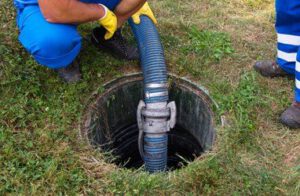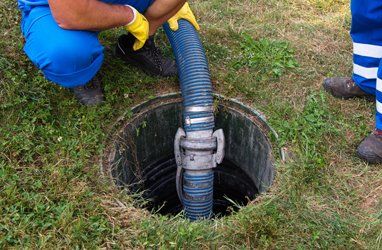Sewer Cleaning involves a variety of techniques. There are mechanical and hydraulic approaches. Mechanical methods use manual cutting and scraping to clear blockages and large blocks of solid waste. Hydraulic methods use high-pressure water to remove debris. These methods use water that’s high enough to reach roots and other obstructions.

Closed-circuit television (CCTV) inspections are an excellent way to locate issues within a sewer system. They provide an inside look at the structural integrity of sewer pipes and help determine whether repairs are necessary. These inspections can also detect holes or cracks in the pipe. These inspections are crucial for meeting regulatory requirements and preventing sewer overflows.
CCTV inspections can identify clogs and blockages in the sewer system. They can also detect the need for sewer line replacement. A CCTV inspection is an excellent choice for sewer cleaning. It can help property owners avoid a costly and time-consuming sewer repair bill.
Before a CCTV inspection, the CONTRACTOR must take measurements of the upstream structure and determine its depth. The contractor must also log the number of service connections and their location. The contractor should also take pictures of all defects. The photos must be in JPEG format and must be labeled according to the line and footage.
The CCTV unit consists of a camera head made of durable stainless steel. It is attached to a waterproof push cable and transmits the data and images to a monitor. It also includes high-intensity lights so that it provides clear views of the drainage system. This allows sewer cleaners to pinpoint the root cause of plumbing issues.
The process of hydraulic sewer cleaning involves the use of high-pressure water hoses to clean sewer pipes and remove obstructions. Although chemical cleaning sounds harmful, modern technicians use biological products to remove the built-up residue. In addition to water, these products contain natural bacteria and enzymes that eat the remaining build-up. Hydro-jetting is the most popular method for sewer cleaning, and it is used on pipes smaller than 12 inches in diameter.
Having your sewer system cleaned regularly is a crucial part of preventative maintenance. It prevents blockages, clogs, and overflows. Even small amounts of debris, as well as damaged and poorly installed pipes, can lead to major problems down the road. Typically, sewer cleaning should be performed every 18 to 22 months. Depending on the pipe diameter and age, experts can determine the optimal cleaning schedule for your system. Regular inspections should also be carried out to ensure that the system is clean.
Hydraulic sewer cleaning is best performed by a plumber or plumbing service. A plumber will use the right nozzles and pressure for the job. Before using a hose, inspect the pipes thoroughly to determine whether the clog is biodegradable or not. In addition to using the right nozzles for a specific job, plumbers may use other methods, such as rodding or bucket machines, to remove the clog. If you do not have a plumber or don’t want to spend a lot of money, you can use a home sewer cleaning solution.
Hydraulic sewer cleaning uses a high-pressure hose to spray water at the blockage. It can be more expensive than mechanical sewer cleaning, but the high-pressure hose is very effective at clearing sewer clogs.
Step cleaning is a technique that uses cleaning solutions such as baking soda or vinegar to dislodge heavy build-ups. The mixture creates foamy bubbles that can scrape away debris. The mixture is effective in removing grease and other debris that can get trapped in the sewer system. Grease and other types of debris can accumulate in sewer lines, even if there’s not a lot of dumping going on. This method is easy and quick to use and can be done on a regular basis.
In addition to removing the build-up of waste in the sewer, Step cleaning also helps keep stormwater drains in good condition. These drains take wastewater from the home and other infrastructure and carry it to a more sophisticated treatment facility. A sewer cleaner is responsible for cleaning these pipes on a regular basis to prevent clogs and costly repairs.
To clean the sewer line, it is important to locate the sewer clean-out, which is a small capped pipe above the ground. Finding the clean-out can be difficult, however, because many homes have more than one. Some clean-outs are even located inside your home. When cleaning your sewer lines, make sure you don’t use any chemicals that could damage your pipes.

